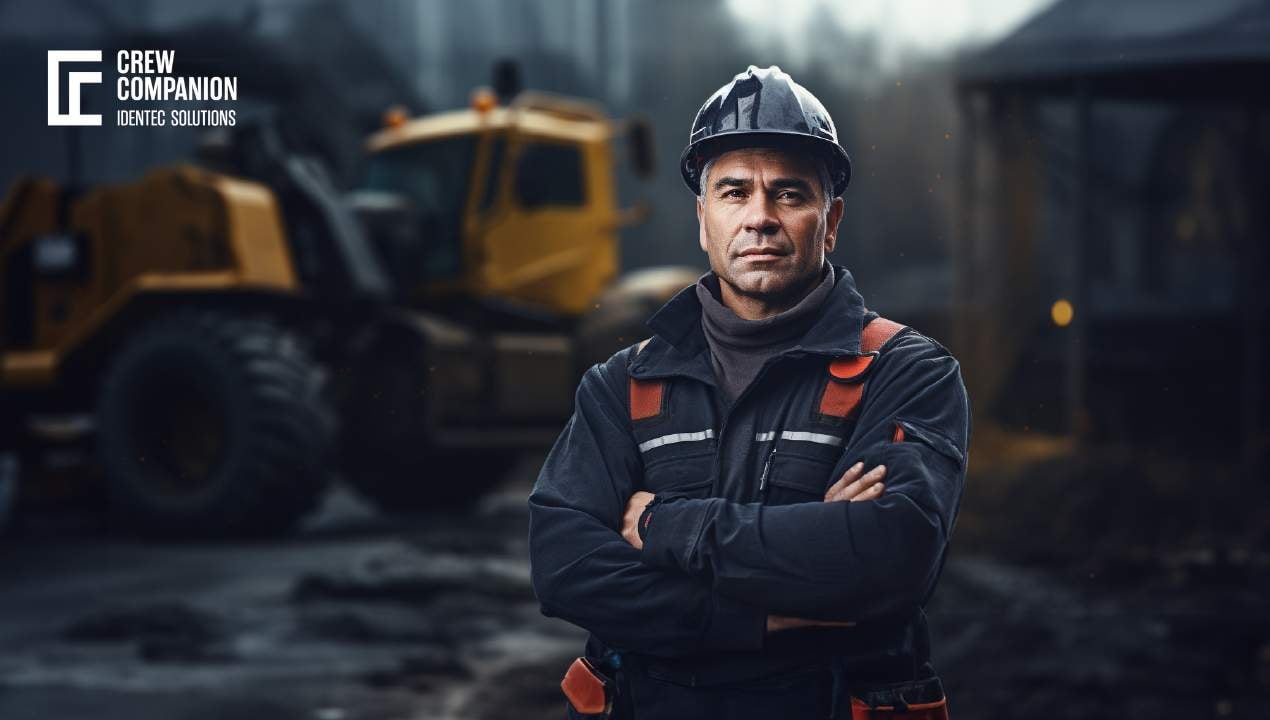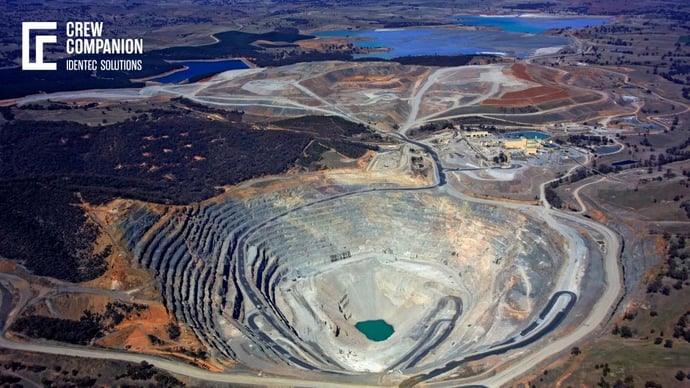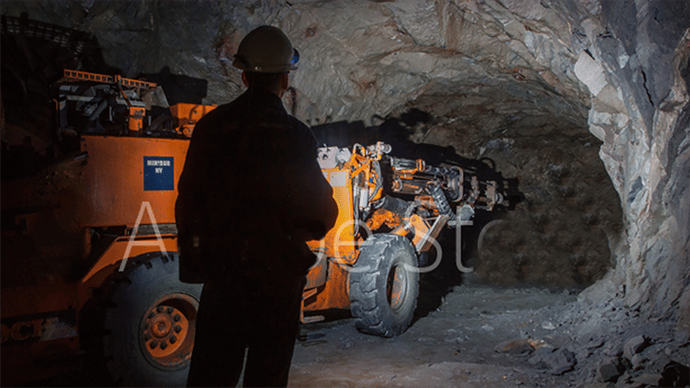Mining digital transformation - How to transition?
| Written by Michal Wozniakowski-Zehenter
As the world becomes faster and faster, the impact of the digital age cannot be ignored. Mining, a history of hard work and manual labour, has been synonymous with the advent of the digital age for centuries. All industries around the world have been forced to adapt and innovate. However, the dawn of the digital age has brought about a remarkable change in how mines operate.
It is no longer necessary to rely on physical strength and manpower to extract precious resources. Digital advancements have revolutionized every aspect of the mining industry, driving the mining landscape to undergo a revolution. As more and more mines embrace technology, they have expanded their exploration and production practices, as well as their supply chain management and safety protocols. So how to become a mine in Industry 4.0?

No video selected
Select a video type in the sidebar.
What is the Benefit of AUTOMATED EQUIPMENT?
“The global mining automation market is expected to grow at a CAGR of 6.4%, increasing from $4 billion USD to $7.5 billion USD by 2033. This growth is driven by advancements in automation technologies, increased safety measures, and the demand for higher operational efficiency in the mining sector. As companies invest in autonomous equipment, AI-driven monitoring systems, and smart mining solutions, the market is set to expand significantly. Automation not only enhances productivity but also reduces risks and operational costs, making it a crucial factor in the industry's future development and competitiveness.
As a result of advances in telecommunications and robotics, mining equipment, including trucks, loaders, and drilling rigs, can now be controlled from hundreds or even thousands of miles away. This not only reduces the logistical challenges associated with remote mining sites but also aids in maintaining operations in geopolitically unstable regions. In highly hazardous areas of a mine, automation minimizes human interaction and reduces the possibility of accidents and fatalities. Limiting the number of people in high-risk areas can greatly reduce accidents and fatalities. Workers can operate machinery from a safe distance with automated equipment, eliminating the need to physically be in hazardous areas. This increases the overall safety of the mining industry as well as protects the lives of miners.” (2)
The initial investment in automated machinery might be significant; it will save you money in the long run by reducing labour costs, increasing efficiency, and reducing downtime. The productivity and cost savings of automated equipment are greater than those of human workers because automated equipment performs tasks more efficiently and consistently. In order to ensure that operations are agile and responsive to market demands, automated equipment can be scaled up or down quickly based on production requirements. Automated equipment allows companies to adjust operations according to high and low demand, whether they need to increase production to meet demand or decrease operations when demand is low.
INTERNET OF THINGS & DATA
Equipment parameters are continuously monitored with the help of IoT devices and smart sensors. These sensors ensure equipment runs smoothly from vibrations that indicate machinery wear to temperature fluctuations that indicate potential overheating. With the advent of smart sensors and IoT technology, mining equipment is now monitored and maintained in a whole new way.
A key aspect of monitoring ecological parameters in mining is the use of sensors, which can detect toxic gas emissions, contamination levels in groundwater, and potential environmental hazards. Mining companies are able to minimize their environmental impact by continuously monitoring environmental factors and ensuring compliance with regulations by continuously monitoring environmental factors. Sensor-generated data is frequently voluminous. Storage in the cloud provides access from anywhere, enabling cross-site comparisons and real-time decision-making for multinational mining operations. An integrated cloud platform provides mining companies with a centralized platform for storing and analyzing sensor information. Cloud-based mining also increases collaboration and information sharing among mining teams, enhancing efficiency and productivity.
In addition to predicting bottlenecks or breakdowns in production processes, advanced analytics lets you take preemptive action before the problem escalates. Incorporated with artificial intelligence, data analytics tools can uncover patterns and insights that are otherwise inaccessible to humans. With AI-driven analytics, you can recognize the mineral signature of a mineral or detect subtle changes in machinery performance. By supplying mine operators with real-time insight, they can tweak operational parameters dynamically, ensuring optimal resource extraction. If, for instance, a particular extraction method results in suboptimal mineral yields, analytics can guide operators in determining how to adjust extraction methods on the fly.

MINING DIGITAL TRANSFORMATION - SUPPLY CHAIN
Among the primary concerns in the mining industry is how to source minerals ethically. Blockchain provides a solution by providing an immutable ledger of all transactions, allowing every ounce of mineral to be traced back to its source. Conflict minerals are prevented from entering the supply chain as a result of this capability, ensuring ethically sourced products. They can automate and streamline mining supply chain processes, from procurement to payments, ensuring that contractual obligations are met automatically when certain conditions are met. In addition to reducing the possibility of fraud, blockchain records are tamper-proof, so stakeholders are more likely to trust each other. This enhances trust.
With digital twins, mining companies can model different scenarios, predicting outcomes based on varying inputs. A digital twin offers a top-down view of the entire supply chain, enabling companies to simulate the impact of equipment delays or spikes in mineral demand. By monitoring this virtual representation, it is possible to identify and address inefficiencies, bottlenecks, and pain points. By aligning objectives and strategies, all parties will be successful.
Mining companies can predict the outcome of different scenarios based on varying inputs using digital twins. In the case of equipment delays or sudden increases in mineral demand, they can simulate their impact. With digital twins, you can get a top-down view of the entire supply chain. Monitoring this virtual representation can identify and address inefficiencies, bottlenecks, and pain points. By doing this, all parties will be able to align their objectives and strategies.
ENHANCING SAFETY
Mining operations have always strongly emphasised safety, but with the rapid advancements in digital technologies, the approach to ensuring the well-being of miners has undergone a remarkable transformation. In this chapter, we will delve into the cutting-edge digital measures that are being embraced to enhance safety in the mining sector.
Modern wearable technology revolutionized safety protocols after traditional safety gear offered limited protection. They provide continuous monitoring of a miner's environment and health through wearable devices. In addition to tracking factors such as temperature, humidity, and toxic gas levels, they also monitor his or her body temperature and heart rate. A wearable device can also detect sudden movements and orientations, which can be crucial for miners working at elevated levels (learn more about miner tracking).
The use of drones has significantly reduced mining operations. Drones have become indispensable assets for routine inspections, post-accident investigations, and surveys. Mining sites are gathered with detailed data by these unmanned aerial vehicles with high-resolution cameras and advanced sensors. In emergency situations and unexpected situations, drones can feed real-time video feeds to control rooms to help make quick decisions.
A virtual reality (VR) mining environment allows miners to experience a variety of challenging scenarios, such as equipment malfunctions or gas leaks, within the safety of a controlled environment, through virtual reality (VR). Through the overlaying of digital information onto the real world, augmented reality (AR) enhances this training experience. In addition to training, VR and AR can be used to assess worker readiness and skills. In the virtual environment, instructors can closely monitor how workers respond to emergencies, so they are adequately prepared when they step on the real mining site.
An Expert View from the Field
In the interview with mining.com (1), Antofagasta CEO Iván Arriagada provided insights into the company's plans and ongoing projects. He mentioned that the Phase 1 expansion at Los Pelambres is designed to address the increasing ore hardness by boosting plant throughput from 175,000 tonnes of ore per day to an average of 190,000 tonnes per day. This will lead to an average annual copper production increase of 60,000 tonnes over 15 years, starting at approximately 40,000 tonnes per year for the first four to five years and rising to 70,000 tonnes as the ore hardness increases and higher milling capacity benefits are fully realized. Arriagada emphasized the transformational nature of this expansion, which will optimize throughput within existing operating, environmental, and water extraction permits and create up to 2,000 new jobs during construction. The company aims to support local employment by prioritizing local suppliers and encouraging large external suppliers to recruit locally.
Arriagada stated, “As mining progresses at Los Pelambres, ore hardness will increase. The Phase 1 expansion is designed to compensate for this, increasing plant throughput from the current capacity of 175,000 tonnes of ore per day to an average of 190,000 tonnes of ore per day. Importantly, annual copper production will increase by an average of 60,000 tonnes per year over 15 years, starting at approximately 40,000 tonnes per year for the first four to five years and rising to 70,000 tonnes for the rest of the period as the hardness of the ore increases and the benefit of higher milling capacity is fully realised. As such, the expansion will be transformational, helping us optimise throughput within the limits of the existing operating, environmental and water extraction permits, as well as creating up to 2,000 new jobs during construction. We will also seek to support local employment by prioritising local suppliers and, in the case of large suppliers from outside the regions where we operate, encouraging them to recruit locally."
Additionally, he discussed progress on their Roadmap for Innovation, highlighting the installation of an integrated remote operations management centre for Centinela in the city of Antofagasta. This centre is expected to transform working methods by reducing travel time to and from the mine, promoting safer working conditions, and enhancing work-life balance, which can benefit colleagues' mental health. The centre aims to make mining more accessible to women and the differently abled.
Arriagada explained, "We have made important progress on our Roadmap for Innovation, which remains a key focus for the company. We are installing an integrated remote operations management centre for Centinela in the city of Antofagasta, which will transform ways of working for our colleagues by cutting travel time to and from the mine, as well as encouraging access to mining for more people, including women and the differently abled. We also believe the centre will promote safer working and a better work-life balance, which, in turn, can benefit colleagues’ mental health.”
What are the CHALLENGES IN the MINING DIGITAL TRANSFORMATION?
The mining industry is poised to experience a digital revolution that promises enhanced efficiency, safety, and management. However, like any significant transformation, there are obstacles that organizations must overcome to fully reap the benefits of these technological advancements. In this chapter, we delve deeper into the intricacies and challenges that accompany the digital transition in mining operations.
With the integration of digital tools, mining operations become integral part of the vast Internet of Things (IoT). Because every device is connected, it is highly vulnerable to cyber threats, greatly expanding the attack surface. Mining operations can suffer catastrophic consequences if a cyber-attack is successful. In response to developments in digital technology, regulatory bodies worldwide are implementing stricter cybersecurity standards for industries, including mining.
There is a significant capital investment required to embrace cutting-edge digital technologies. In particular for smaller mining operations, the initial costs can be prohibitive if the machinery is equipped with embedded sensors or the software platform is sophisticated. A digital tool must be constantly updated, patched, and sometimes even upgraded in order to remain secure and effective, unlike traditional machinery. Investors who seek short-term gains may find it difficult to justify their investments.
It isn't only about technology; digital transformation also encompasses the people who use it. Existing employees may not have the skills to operate or manage new digital tools, so comprehensive training programs will be necessary. The mining industry is increasingly dependent on technology, so the demand for IT professionals, data scientists, and other tech professionals is growing. In order for digital transformation to succeed, organizations must address workforce concerns and manage the cultural shift.
In spite of their many advantages, digital tools require reliable internet connections. There are many mining sites, especially in remote areas, that lack reliable internet connections. Digital infrastructures can also increase energy consumption in mining operations, so it becomes crucial to have a steady and sustainable power supply.
FAQS
What is digitalization transformation in mining?
Digital transformation in the mining industry involves harnessing the potential of digital technology to completely revolutionize the way mining companies operate. By seamlessly integrating digital solutions into all aspects of their operations, mining companies can significantly enhance efficiencies, improve safety protocols, and unlock exciting new opportunities for growth and development. Through digital transformation, mining companies can optimize their operations by streamlining processes, automating tasks, and utilizing real-time data to make well-informed decisions. By leveraging cutting-edge technologies like artificial intelligence, machine learning, and the Internet of Things (IoT), mining companies can achieve unprecedented levels of productivity and operational excellence. Moreover, digital transformation empowers mining companies to deliver even greater value to their stakeholders. By implementing digital solutions, mining companies can better predict market trends, optimize resource allocation, and minimize production costs. This, in turn, enables them to maximize profitability and create sustainable value for their esteemed shareholders.
Why is digitalization important in safety?
It is essential for mine leaders to prioritize the safety and security of their employees in today's fast-paced and ever-changing workplace. As a result of digitalization, site leaders now have the capability to respond to safety hazards (read more about the Chile mine disaster) and concerns in a timely manner, allowing them to take immediate corrective actions to ensure the safety of their people. Advanced technologies, such as sensors, cameras, and data analytics, can gain valuable insights into working conditions and identify safety hazards before they become accidents or injuries. In addition to preventing incidents, this proactive approach fosters a culture of safety and security within the mine as well.
TAKEAWAY
Today, in an era of unprecedented technological advancements, investing in cutting-edge technology is no longer a luxury. In addition to optimizing operations, streamlining processes, improving safety, and being more environmentally responsible, these digital tools offer mines a number of options, such as autonomous vehicles, drones, and advanced data analytics. In addition to the technology itself, a successful digital transformation in mining requires an entirely new mindset. A digital-first culture should be fostered among employees and stakeholders at all levels. Technology should be used to drive value by embracing innovation, being open to change, and continuously seeking new ways to do so.
Dive deeper into one of our core topics: Miner Safety
Glossary
The supply chain in mining - is the comprehensive network of processes, resources, and logistics involved in extracting, processing, and delivering minerals from the mine to end users. It encompasses various stages, including exploration, extraction, transportation, refining, distribution, and sales. A well-structured mining supply chain ensures a seamless flow of raw materials while minimizing costs, reducing environmental impact, and maintaining safety and regulatory compliance.
Key components include equipment procurement, workforce management, energy supply, and waste disposal. The mining supply chain also integrates technology, automation, and sustainability initiatives to enhance efficiency. Effective supply chain management in mining involves coordinating suppliers, manufacturers, logistics providers, and regulatory bodies to mitigate risks like price fluctuations, transportation disruptions, and geopolitical instability. With growing emphasis on responsible sourcing, companies focus on ethical mining practices, traceability, and sustainability. Optimizing the mining supply chain not only boosts productivity but also ensures long-term operational resilience and global competitiveness. (3)
Sources:
(1) https://www.mining.com/ceo-interview-antofagastas-ivan-arriagada-on-the-companys-digital-transformation-roadmap/
(2) https://www.factmr.com/report/mining-automation-market
(3) https://www.sciencedirect.com/science/article/abs/pii/S0301420721002853
Note: This article was updated on the 7th of February 2025

Author
Michal Wozniakowski-Zehenter, Marketing Manager
Michal Wozniakowski-Zehenter is an experienced marketing and project management professional. He spent most of his career on projects with a strong focus on digital marketing and event management. He is a very active voice representing offshore and mining industries through social media channels. Michal writes mainly about offshore oil and gas, renewable energy, mining and tunnelling. Compiling and sharing the knowledge within industries is one of his goals.





